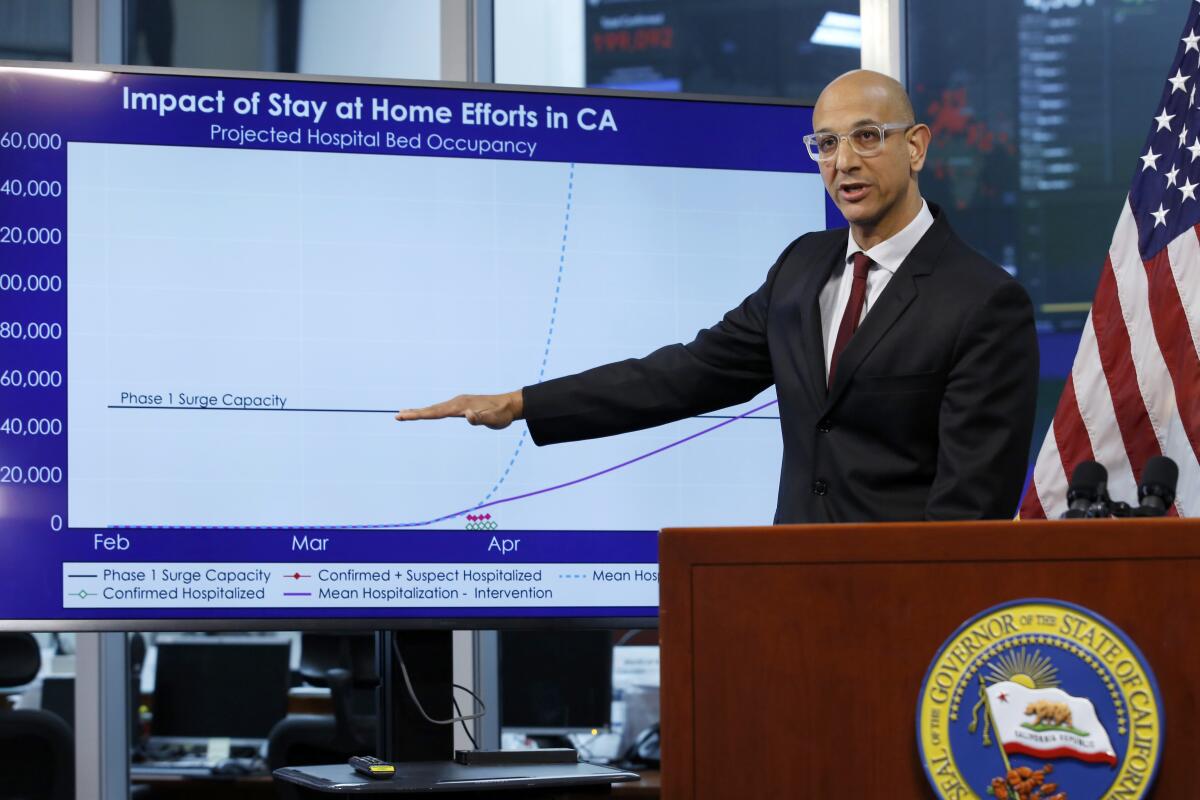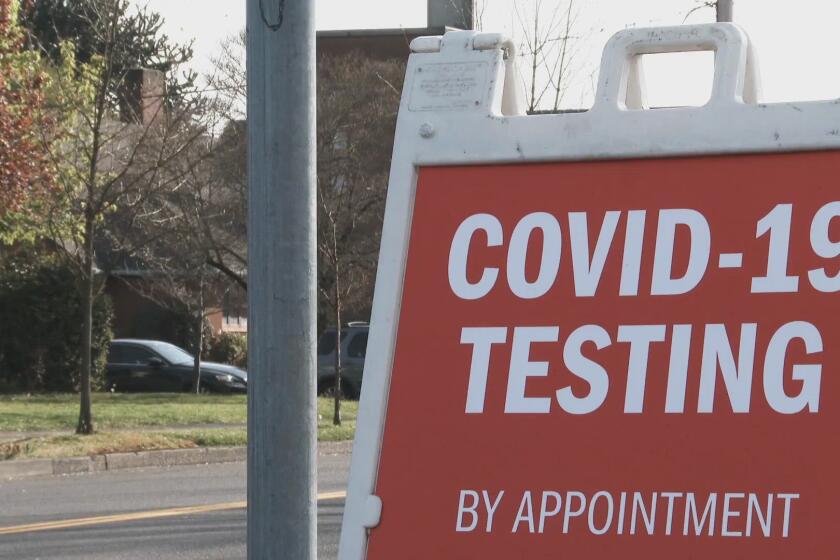California vows to fix coronavirus reporting system amid huge backlog of unreported tests

- Share via
SACRAMENTO — A series of data failures has created a backlog of as many as 300,000 test results in California, the state’s top health official said Friday as he provided the first public explanation of a problem that has stymied efforts to understand the spread of the coronavirus.
California Health and Human Services Secretary Dr. Mark Ghaly said the state is developing a new coronavirus tracking system due to the recent deficiencies of the California Reportable Disease Information Exchange, a clearinghouse for state testing data known as CalREDIE.
“Simply put, the CalREDIE system was not built for this volume of data,” said Ghaly. “In order to create a lasting solution, we are accelerating the development of a new laboratory reporting system for COVID-19.”
Ghaly said the state would work through the backlog of records, which include COVID-19 tests and other health results, over the next 24 to 48 hours. He said state missteps compounded a problem that began July 25 with a server outage and promised a full investigation.
The data failure set off alarm bells this week as total deaths surpassed 10,000 in California, a state that leads the nation in COVID-19 cases despite the undercount and has struggled to mitigate the virus. The delayed results could significantly increase the confirmed spread of COVID-19 from a total of 540,000 cases in the state as of early Friday.
Ghaly first publicly disclosed “some discrepancies” with CalREDIE data in a video news conference on Tuesday.
The disclosure raised questions about the reported 21% weekly drop in confirmed infections that Gov. Gavin Newsom described as a positive sign on Monday.
Even if the severity of the problem wasn’t fully known until this week, the underlying failures had already been identified by state officials.
The California Department of Public Health sent county health departments an email on July 31 describing an issue processing lab results and delays in the CalREDIE system — three days before Newsom touted the decrease. That email, a copy of which was obtained by The Times, notes that local officials had been informed of the problem even earlier. Ghaly said on Friday he “became aware of the magnitude of the data backlog in the late afternoon on Monday and alerted the governor and his senior staff shortly thereafter.”
The data problem resulted in an inaccurate accounting of positivity rates and confirmed cases, metrics that are crucial to state and local response. The data issue has also limited the ability of counties to carry out case investigations and trace contacts of those who test positive for COVID-19, Ghaly said Tuesday.
Without an accurate picture of confirmed cases, many local officials who rely on the CalREDIE system have scrambled to conduct their own tallies to understand the spread of the virus in their communities. The state has stopped adding and removing counties from its list of areas experiencing higher rates of transmission, which are subject to more restrictions than other parts of California. Currently 38 counties, representing 97% of the state population, are on the list.
Ghaly downplayed the effects of the data problem Friday, saying it has no impact on hospitalization or death data, and the state did not change its response policies based on the incomplete information. The state reported 5,932 patients hospitalized with COVID-19, including 1,798 in intensive care, as of Thursday.
The latest maps and charts on the spread of COVID-19 in California.
In describing the problem, Ghaly said a July 25 server outage created a delay in records coming into the state’s lab reporting system. The state implemented what he described as “technical changes that allowed the records to flow into the system more quickly.” The changes were supposed to be temporary, Ghaly said, but the state did not disable them, “causing further delays in our reporting of lab data and creating an extensive backlog.”
“Simultaneously, we discovered that we were not receiving data from one of our largest commercial labs for a period of five days,” Ghaly said. “This was due to a certificate that the state neglected to renew timely. This resulted in data not being able to transmit to the state.”
Ghaly identified the lab as Quest Diagnostics and said the company had been unable to send test results to the state from July 31 through Aug. 4.
Ghaly had declined to offer details about the extent of the issue or what may have skewed the data earlier this week and pledged to share a full accounting of the problem as soon as the state fully understood it.
As the state waited to release details, California counties added disclaimers on their websites noting that their COVID-19 data may be inaccurate. In the state’s hard-hit Central Valley, local leaders worry the problem will erode the already limited confidence in the government’s response to the virus.
The lack of reliable test result data is disrupting pandemic response efforts, leaving officials in the dark about the spread of COVID-19.
“We’re very concerned about it both from a health and safety perspective but also from a public trust perspective,” said Stanislaus County Supervisor Kristin Olsen. “It is very hard to garner community trust and compliance if they don’t have faith in the numbers being reported.”
Newsom, who held his most recent news conference on Monday, has not publicly addressed the data errors.
CalREDIE was first connected to local public health departments across the state in 2012, winning praise that summer with a government technology award. But while it has been used for other important statewide efforts in the past — notably in helping to gather information on the Zika virus beginning in 2015 — such uses were much more limited than its central role during the COVID-19 pandemic.
Some local health officials complained in late March that not all labs were connected to the statewide system. And in late June, sporadic reports appeared from some counties of problems with the system’s data.
When asked why it took so long for local concerns about the system to come to his attention, Ghaly said he’s working to understand communication issues at California Health and Human Services and the California Department of Public Health.
“We are aware that individuals there were knowledgeable of some of these challenges, and we are doing a complete look into how that communication both could have been better and where it went wrong,” Ghaly said.
Sacramento Bureau Chief John Myers contributed to this report.
More to Read
Sign up for Essential California
The most important California stories and recommendations in your inbox every morning.
You may occasionally receive promotional content from the Los Angeles Times.













